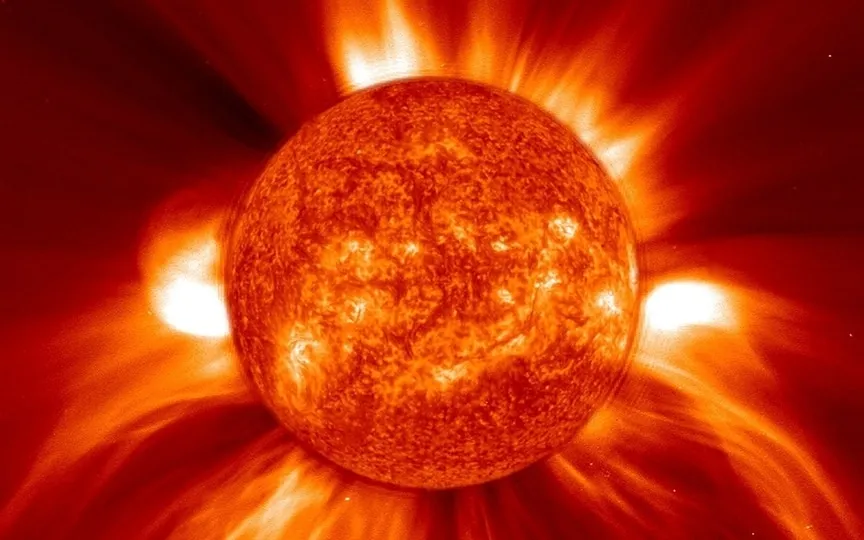NASA SOHO Reveals CME Attack Could Bring Potentially Hazardous Solar Storm to Earth
Following a sunspot-filled June, July is poised to continue the trend of intense solar activity. This month, a solar flare from the notorious sunspot AR3554 caused a radio blackout, and now, NASA’s Solar and Heliospheric Observatory has detected two separate coronal mass ejections (CME) from the Sun, both partially directed towards Earth. Consequently, these CMEs are expected to brush past our planet, triggering solar storm events. Adding to the concern, the second CME is projected to catch up to the first, resulting in two consecutive CME impacts and intensifying the overall strength of the solar storm.
Dr. Tamitha Skov, a space weather physicist, said in a tweet: “Our #Sun celebrates #July4th with its own special fireworks display! We have two partially Earth-bound #solarstorms (aka CMEs) on the way. The second storm will overtake the first and give us a 1.2 hit. Model predictions will likely show the effect on July 7. I’ll post the NASA model runs next.”
A solar storm will hit Earth on July 7
Although partial CMEs are not known to cause strong solar storms, this case is worrisome because of two consecutive CMEs. The final effect is amplified, and as a result, the storm can be frighteningly powerful.
It is not currently possible to say whether it could produce a G5 geomagnetic storm, but the intensity of the storm could be strong enough to damage small satellites, disrupt wireless communications such as GPS, low-frequency radio waves and mobile networks, and even fluctuating power grids, which could further damage electrical equipment that must be connected to a power source.
In addition, in the worst case scenario, such storms can also damage Internet connectivity as well as sensitive ground-based electronics such as pacemakers.
The technology that makes NASA SOHO possible
NASA’s SOHO (Solar and Heliospheric Observatory) is a satellite that was launched on December 2, 1995. It is a joint project between NASA and the European Space Agency (ESA) that studies the Sun, its atmosphere and its effects on the Solar System. . Equipped with 12 scientific instruments such as Extreme Ultraviolet Imaging Telescope (EIT), Michelson Doppler Imager (MDI), LASCO (Large Angle and Spectrometric Coronagraph) and others, SOHO will take pictures of the solar corona, measure the sun’s speed and magnetic fields. surface of the sun and observes the faint corona around the sun.
NASA monitors solar storm events to ensure that anyone concerned about the likely impact area and its severity is given advance warning.




